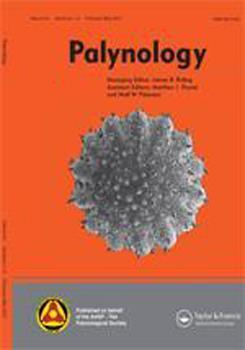Steppes and grasslands of semiarid environments in the Central Andes are poorly understood in fossil records due to the lack of modern pollen–vegetation studies. This paper is focused on a systematic analysis of the modern pollen–vegetation relationship in three protected areas of the Puna in Jujuy, northwestern Argentina. Vegetation assemblages were described on the basis of their floristic composition in 32 plots. Different multivariate methods, indices of association and simple linear regression models were applied in order to investigate the degree to which the different vegetation assemblages can be distinguished by their pollen spectra. Five plant assemblages were described, which were partially represented by their pollen spectra: mixed and shrubby steppes, scrubland, grassland with shrubs and high Andean grassland. The pollen spectra reflected both altitudinal variations and environmental conditions. In the Puna belt, at 3600 m, shrubs were present in great abundance and their highest pollen percentages were recorded. Both the abundance of Poaceae herbs and their pollen type increased with increasing altitude up to 4220 m, indicating the transition towards the Altoandean belt. Pollen assemblages evidenced the following environmental conditions: (1) the temperature decrease is characterized by taxa adapted to either cold air (<7 °C) or cold soil (Aridisols-Cryids/Inceptisols-Ustepts type) including Poaceae, Frankenia triandra, Apiaceae, Hoffmansegia glauca, Ephedra, Caryophyllaceae; (2) moisture availability in the soil can be discernible by assemblages indicating dry soil (Aridisols-Durids type), such as Baccharis, Fabiana densa, Maihuniopsis boliviana, Fabaceae, Tetraglochin cristatum and Nassauvia axilaris, from those indicating humid soil (Entisols-Psaments type), such as Parastrephia, Astragalus garbancillo and Gentianaceae. Four taxa exhibited both a good association and a significant correlation and could be considered indicative of the steppe (Baccharis and M. boliviana), scrublands (Parastrephia) and grassland (Poaceae) in a fossil record. This work has important implications for interpreting the dynamics of vegetation during the Holocene in the Puna.
How to translate text using browser tools
8 July 2019
Relationship between Vegetation Assemblages and Modern Pollen in Semiarid Environments of Jujuy, Northwestern Argentina
Gonzalo R. Torres,
Pamela T. Fierro,
Ana C. Sánchez,
Liliana C. Lupo
ACCESS THE FULL ARTICLE
It is not available for individual sale.
This article is only available to subscribers.
It is not available for individual sale.
It is not available for individual sale.

Palynology
Vol. 43 • No. 3
July 2019
Vol. 43 • No. 3
July 2019
Altitudinal belts
Argentina
central Andes
Jujuy
modern analogues
pollen–vegetation relationship
protected areas





